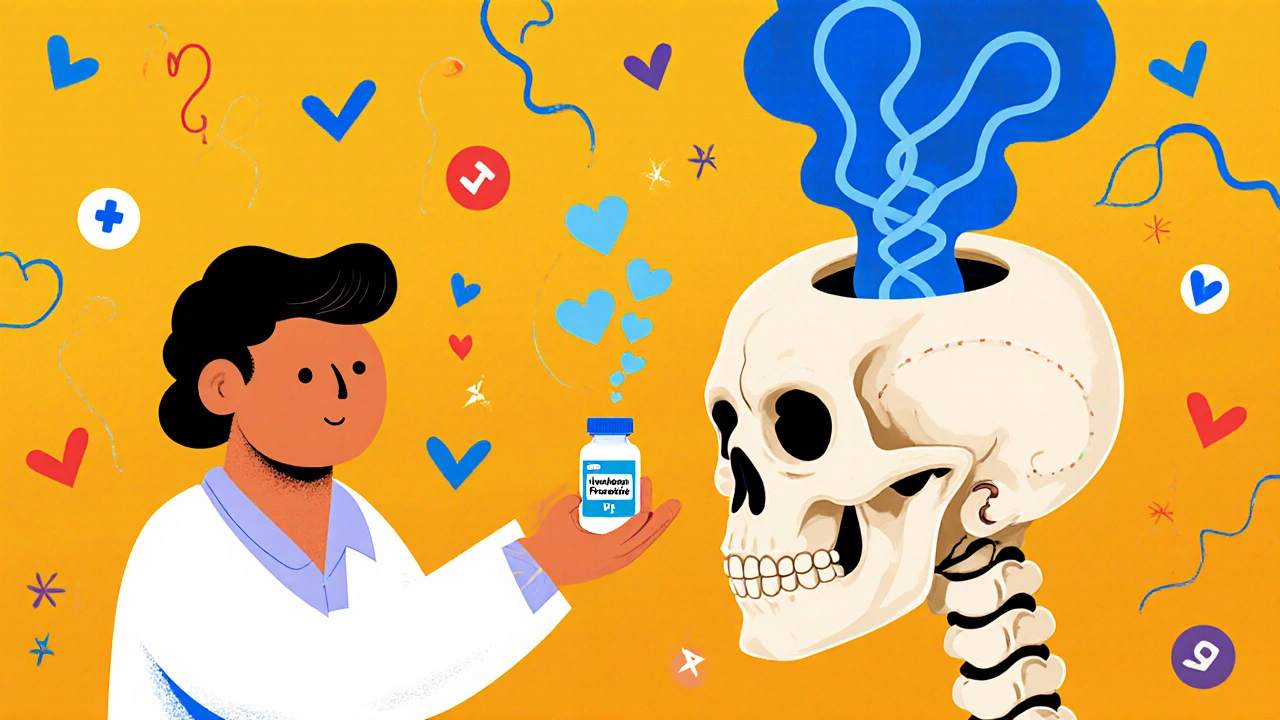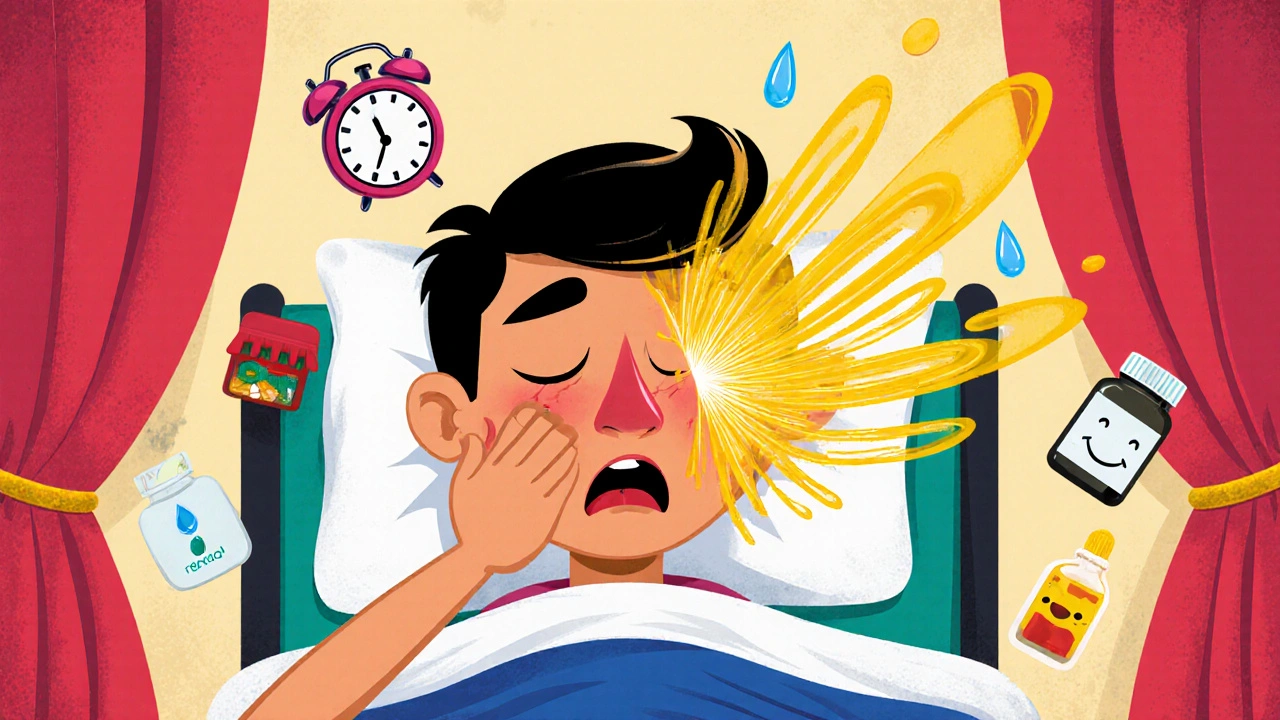What is Bell’s palsy?
Bel’s palsy is sudden weakness or paralysis on one side of the face, caused by inflammation of the facial nerve. It happens fast-often overnight. You might wake up with your mouth drooping, difficulty closing your eye, or trouble smiling. It’s not a stroke, not a tumor, and not caused by stress. It’s called idiopathic, meaning doctors don’t know exactly why it happens, but they know how to treat it.
Every year, about 1 in 5,000 people get it. Most are between 15 and 45 years old. Pregnant women, people with diabetes, and those with upper respiratory infections are at slightly higher risk. The good news? Most people recover fully, even without treatment. But treatment makes a real difference.
Why corticosteroids are the first-line treatment
The facial nerve runs through a narrow bony tunnel in the skull. When it swells, it gets squeezed. That’s what causes the paralysis. Corticosteroids, like prednisone, reduce that swelling. Less pressure = better nerve function = faster recovery.
Studies show corticosteroids improve full recovery rates from about 70% to over 85%. That’s not a small gain-it’s the difference between living with a crooked smile for months and getting back to normal in weeks.
The evidence is strong. The Cochrane Database reviewed 895 patients across seven high-quality trials. Those who took corticosteroids had a 31% lower chance of incomplete recovery. The American Academy of Family Physicians gives this recommendation the highest rating: A. That means the data is solid, consistent, and reliable.
How much prednisone should you take?
It’s not just about taking steroids-it’s about taking the right amount at the right time.
The standard dose is 50 to 60 milligrams of prednisone daily for five days, then a five-day taper. That’s a total of 500 to 600 mg over 10 days. Studies show doses below 450 mg total don’t work as well. Patients on lower doses had 30% more incomplete recovery than those on full doses.
Timing matters even more. The clock starts ticking the moment symptoms begin. Treatment is most effective when started within 48 hours. Some benefit remains up to 72 hours, but after that, the advantage fades fast. Many people delay seeing a doctor because they think it’s a stroke or a pinched nerve. That’s why awareness is critical.
Corticosteroids vs. antivirals: what works?
For years, doctors tried combining corticosteroids with antivirals like acyclovir or valacyclovir, thinking a virus might trigger Bell’s palsy. But the data doesn’t support that.
Antivirals alone? No benefit. The AAFP says there’s no high-quality evidence for them as a single treatment.
Combining antivirals with steroids? The picture is mixed. Some studies suggest it might reduce long-term complications like synkinesis-when facial muscles move in the wrong way, like your eye squints when you smile. But it doesn’t improve overall recovery. The evidence is rated B-moderate, not strong. So it’s an option for some, especially if the doctor suspects Ramsay Hunt syndrome (a herpes-related version), but not a must.
Other treatments-like laser therapy, hyperbaric oxygen, or injections into the ear-have been tested. None show better results than corticosteroids alone. They’re not recommended by major guidelines.

What about side effects?
People worry about steroids. They’ve heard stories about weight gain, mood swings, or diabetes flares. But here’s the truth: this is a 10-day course. Not months. Not years.
In clinical trials, side effects were no more common with steroids than with placebo. The most common issues? Trouble sleeping, increased appetite, or mild mood changes. These go away when the medication stops.
Diabetics need to monitor blood sugar closely during treatment. Steroids can raise glucose levels temporarily. But with careful checks, most manage it fine. Serious side effects like osteoporosis or adrenal suppression? Not possible with a 10-day course. The risk is almost zero.
What happens if you don’t treat it?
About 70% of people recover fully without any treatment. That sounds promising-but it also means 30% don’t. And among those who don’t recover fully, some are left with permanent facial weakness, eye damage from not being able to blink, or painful muscle spasms called synkinesis.
Machine learning studies of nearly 500 patients found that corticosteroid use was the second strongest predictor of recovery-after age. Younger people do better overall, but even older adults benefit significantly from steroids.
Without treatment, recovery can take 3 to 6 months. With treatment, most see improvement within 2 weeks and full recovery by 3 months.
How do doctors know it’s Bell’s palsy and not something else?
Not every facial weakness is Bell’s palsy. Stroke, tumors, Lyme disease, and Ramsay Hunt syndrome can mimic it. That’s why diagnosis matters.
Doctors check for key signs: Can you raise your eyebrow? Close your eye tightly? Smile without drooping? If all these are affected on one side, and there’s no other neurological problem (like arm weakness or slurred speech), it’s likely Bell’s palsy.
Stroke, for example, affects the lower face but spares the forehead. Bell’s palsy hits the whole side. That’s a critical difference.
Doctors use the House-Brackmann scale to grade severity-from I (normal) to VI (total paralysis). This helps track progress and decide if treatment needs adjusting.

What if treatment is delayed?
Many patients don’t get seen until 3 to 5 days after symptoms start. That’s too late for maximum benefit. In one study, the average delay was 3.2 days.
But even if you’re past 72 hours, take the steroids anyway. You’ll still get some benefit. And you’ll still reduce your risk of long-term problems.
Education helps. Patient handouts from groups like Facial Palsy UK have cut delays by 28% in pilot programs. If you know the signs-sudden facial droop, eye can’t close, taste changes-don’t wait. Call your doctor or go to urgent care.
What’s the long-term outlook?
With proper treatment, 89.5% of patients recover fully within 9 months. Without treatment, that number drops to about 70%.
Most people don’t need surgery. Physical therapy for facial muscles can help if recovery is slow. Eye drops or patches protect the cornea if you can’t blink.
Recovery isn’t always linear. Some people notice progress, then hit a plateau. That’s normal. The nerve regenerates slowly. Patience is part of the treatment.
Why corticosteroids are still the gold standard
There’s no new drug on the horizon that’s better. Corticosteroids are cheap-about $4.27 for a 10-day course in the U.S. They’re widely available. They work. And the evidence hasn’t changed in over a decade.
Guidelines from the American Academy of Neurology, the American Academy of Otolaryngology, and the AAFP all agree: start corticosteroids early. That’s the standard everywhere-from Tampa to Tokyo.
What’s changing is how we catch it faster. Telemedicine tools now help patients take photos of their face and get instant triage. One U.S. pilot program cut diagnosis delays by 42%. That’s huge.
Final takeaway: Act fast, take the steroids
If your face suddenly droops, don’t Google symptoms for hours. Don’t wait to see your primary care doctor next week. Call your doctor today. Go to urgent care. Say: "I think I might have Bell’s palsy."
Start prednisone within 48 hours. Take the full 10-day course. Don’t stop early because you feel better. Your nerve needs the full anti-inflammatory effect.
Recovery is likely. But with steroids, it’s faster, more complete, and less likely to leave you with lasting problems. That’s not just medical advice-it’s the best chance you have to get your smile back.


Written by Guy Boertje
View all posts by: Guy Boertje